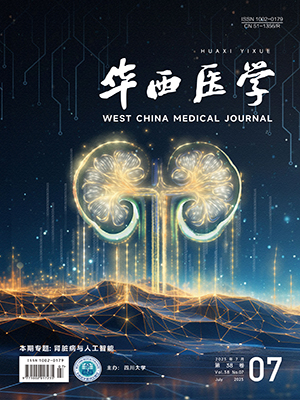【摘要】 目的 了解成都市社區居民腦卒中的流行病學特征,為腦卒中預防、干預提供科學依據。 方法 采用整群隨機抽樣方法抽取成都市2個社區。對132 303人采用前瞻性的熱追蹤,搜集社區中腦卒中發病及死亡人群。 結果 2008年腦卒中發病率、死亡率分別為217.68/10萬、49.13/10萬,2009年發病率、死亡率分別為239.60/10萬、41.57/10萬,2008年—2009年標化發病率216.01/10萬,標化死亡率43.61/10萬。缺血性腦卒中患者構成比最高,占半數以上。發病率隨年齡增長而增高(χ2=1 095.11,P lt;0.001),男女發病率差異無統計學意義(χ2=2.367,P=0.124)。 結論 成都市社區居民發病率與我國平均水平相當,死亡率略低于我國平均水平。
【Abstract】 Objective To explore the epidemiologic features of cerebral apoplexy in community of Chengdu, and to provide references for intervention and prevention of cerebral apoplexy. Methods Two communitis in Chengdu were selected by randomized cluster sampling method. The morbidity and mortality in 132 303 people were calculated by prospective tracing. Results The annual incidence was 217.68 per 100 000, and the annual mortality was 49.13 per 100 000 in 2008. The annual incidence was 239.60 per 100 000, and the annual mortality was 41.57 per 100 000 in 2009. The age-standardized incidence was 216.01 per 100 000, and the age-standardized mortality was 43.61 per 100 000 in the two years. Ischemic cerebral apoplexy exceeded half of all and had a highest constituent ratio. The incidence Increased with the age (χ2=1 095.11, P lt;0.001), while there was no significant difference between the male and female (χ2=2.367, P=0.124). Conclusion The incidence of cerebral apoplexy in Chengdu City is similar to the average incidence of our country, and the mortality is lower than that of the average mortality.
引用本文: 張偉,蘇偉,何俐. 成都市社區腦卒中流行病學調查. 華西醫學, 2011, 26(1): 41-43. doi: 復制




